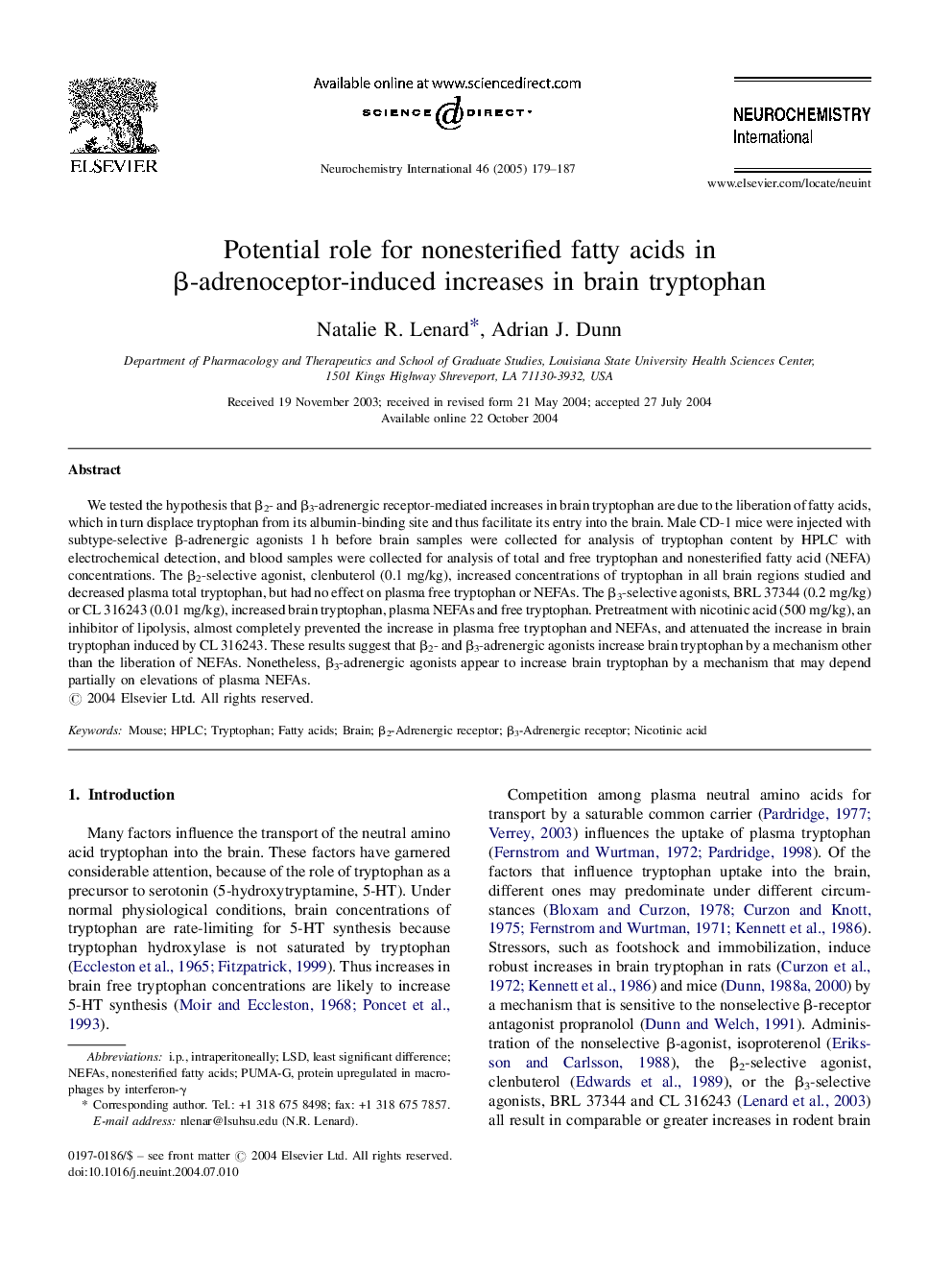| Article ID | Journal | Published Year | Pages | File Type |
|---|---|---|---|---|
| 10958791 | Neurochemistry International | 2005 | 9 Pages |
Abstract
We tested the hypothesis that β2- and β3-adrenergic receptor-mediated increases in brain tryptophan are due to the liberation of fatty acids, which in turn displace tryptophan from its albumin-binding site and thus facilitate its entry into the brain. Male CD-1 mice were injected with subtype-selective β-adrenergic agonists 1 h before brain samples were collected for analysis of tryptophan content by HPLC with electrochemical detection, and blood samples were collected for analysis of total and free tryptophan and nonesterified fatty acid (NEFA) concentrations. The β2-selective agonist, clenbuterol (0.1 mg/kg), increased concentrations of tryptophan in all brain regions studied and decreased plasma total tryptophan, but had no effect on plasma free tryptophan or NEFAs. The β3-selective agonists, BRL 37344 (0.2 mg/kg) or CL 316243 (0.01 mg/kg), increased brain tryptophan, plasma NEFAs and free tryptophan. Pretreatment with nicotinic acid (500 mg/kg), an inhibitor of lipolysis, almost completely prevented the increase in plasma free tryptophan and NEFAs, and attenuated the increase in brain tryptophan induced by CL 316243. These results suggest that β2- and β3-adrenergic agonists increase brain tryptophan by a mechanism other than the liberation of NEFAs. Nonetheless, β3-adrenergic agonists appear to increase brain tryptophan by a mechanism that may depend partially on elevations of plasma NEFAs.
Keywords
Related Topics
Life Sciences
Biochemistry, Genetics and Molecular Biology
Cell Biology
Authors
Natalie R. Lenard, Adrian J. Dunn,
